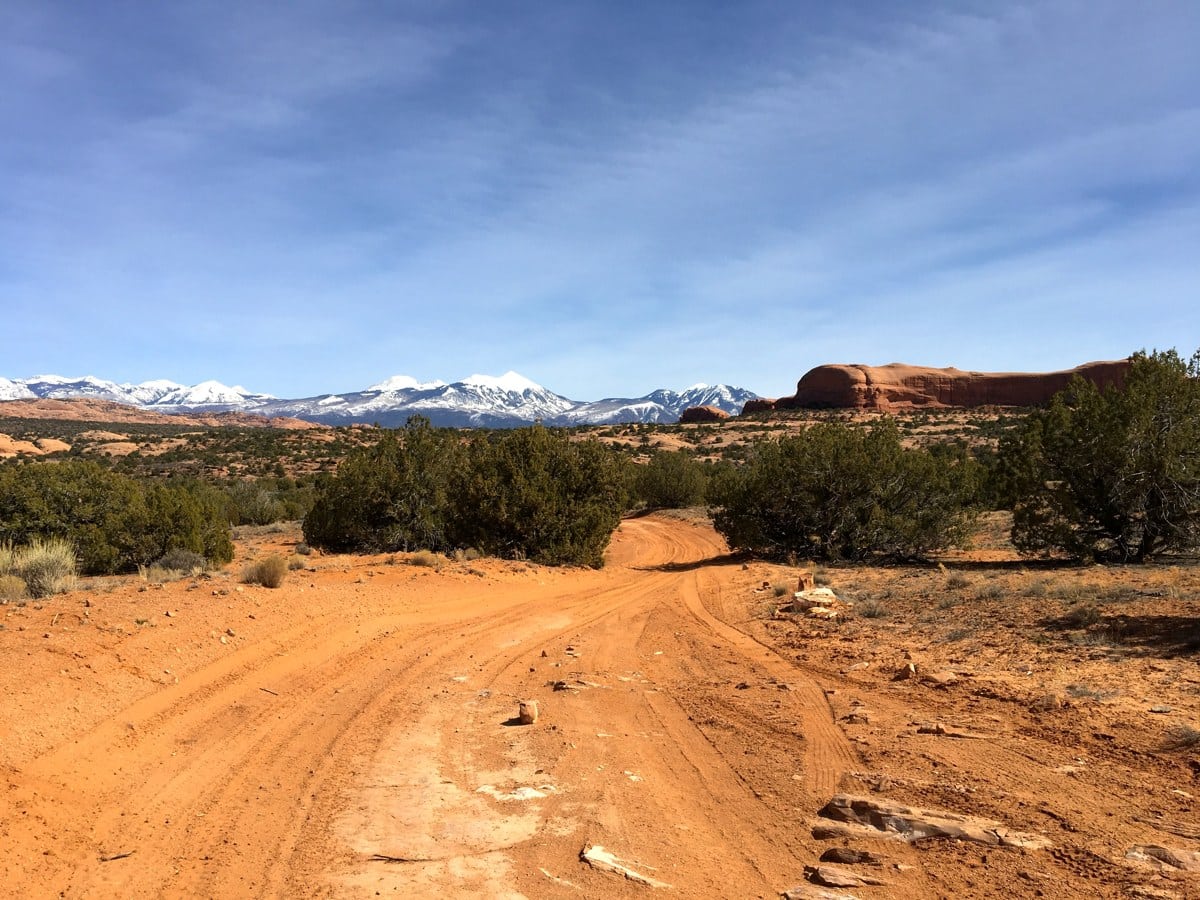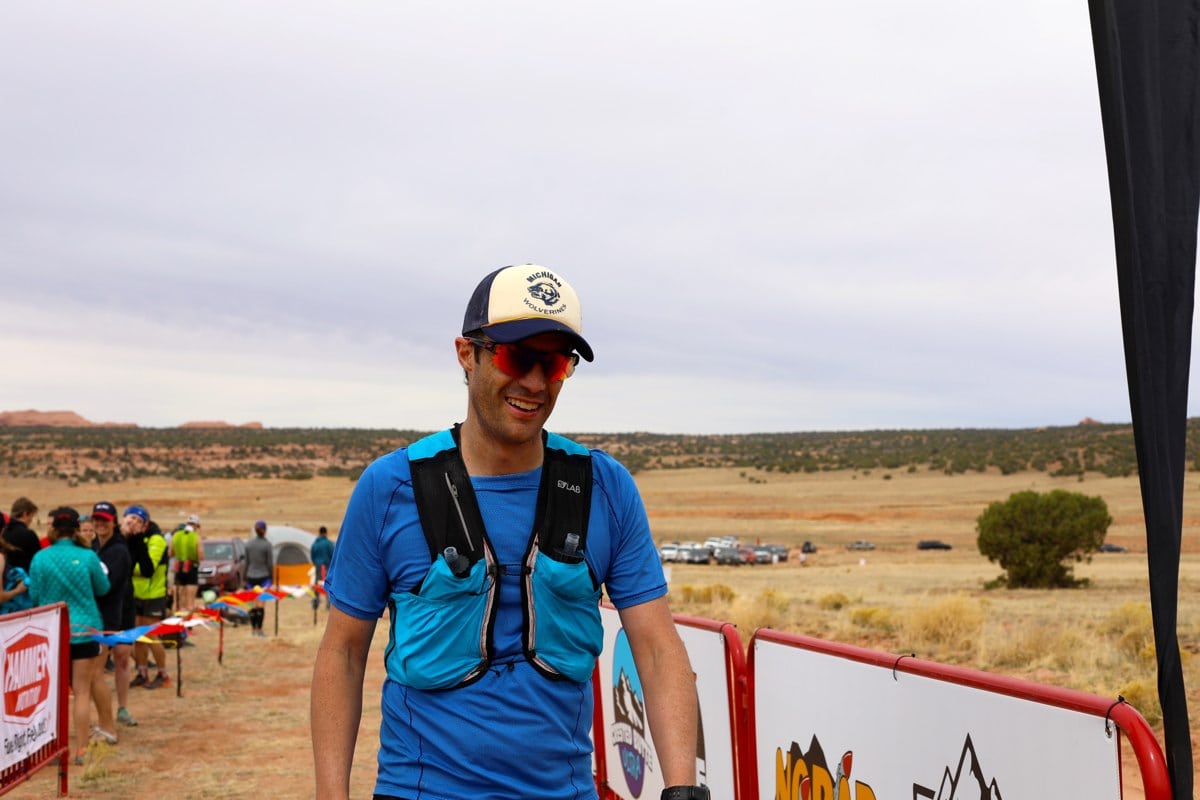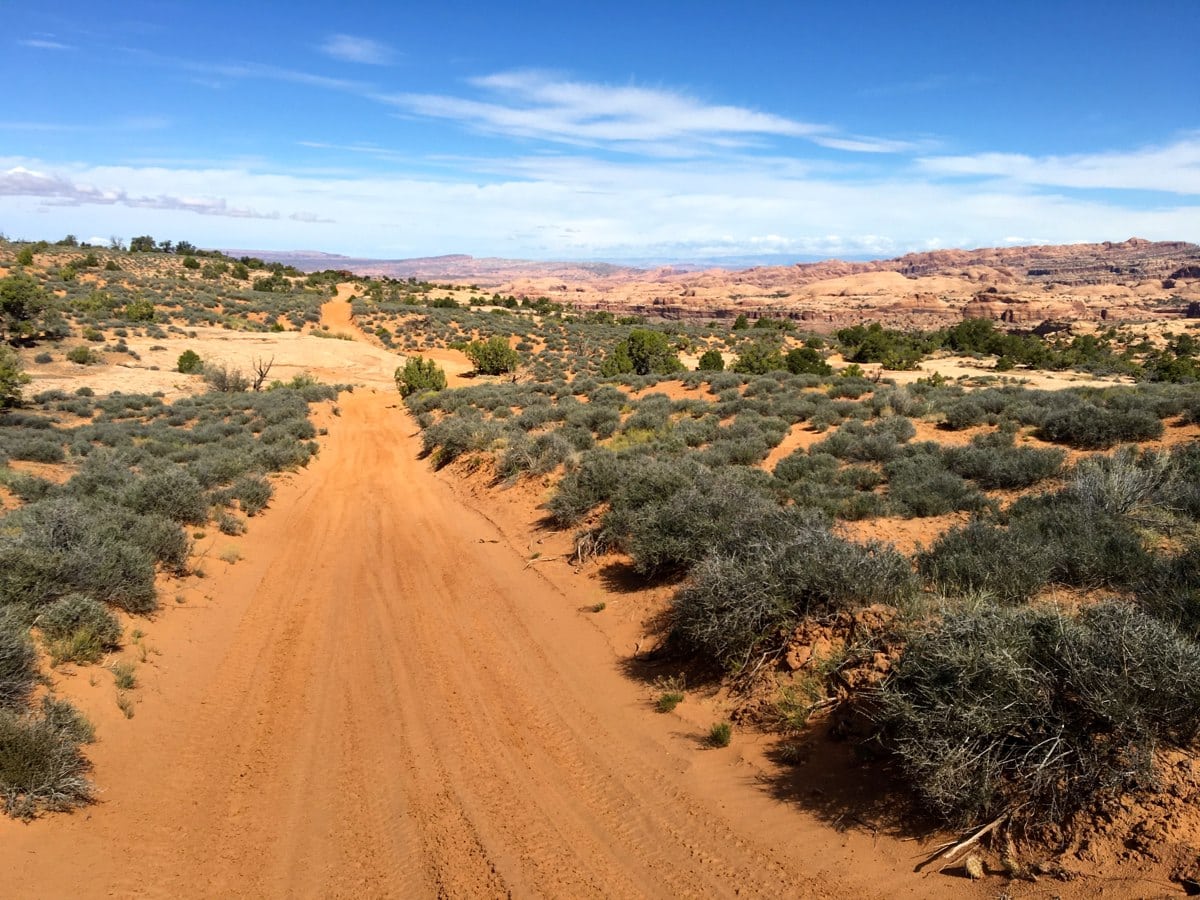For those looking to finish most ultramarathons with perhaps secondary goals such as minimizing difficulty or performing relatively well for one’s ability, I think there’s no more useful tool and no tool that’s more underutilized than the long run. I’m not talking about an all-day, hike-filled saunter with some friends about the woods, which most of us enjoy and need little encouragement to indulge in more frequently. No, I’m talking about the runnable long run. Like 20 or 30 or 40 miles that are runnable 90% or more of the time.

Long run #1 with Behind the Rocks, the La Sal Mountains, and Prostitute Butte in view. Photo: Bryon Powell
In looking ahead to some goals later this year, I aimed to log one or two runs in the 25-to-30-mile range over the past month. Well, that turned into four runnable efforts of 30-ish miles each over that span of opportunity (I’m not on the road) and necessity (life kept me from otherwise reaching my entirely modest weekly mileage targets). I wouldn’t necessarily condone this frequent a barrage of such runs for everyone, even if it worked for me this time around. (One such run every third or fourth week is more reasonable, while even three or four such runs over an entire four-to-sixth month build-up for a focus ultra would be beneficial.) What’s more, every single one of these long runs went better than its predecessor. Here’s how each went:
- On the first one, I had to mix in both a good bit of self-preservation and, then, simply unavoidable walking in the final 10 or 15 miles. My calves just weren’t up to the task even if my energy and legs generally remained good.
- I ran more of the second outing, but dealt with a great deal of gastrointestinal distress, vomiting, and other unpleasant issues for many hours post-run. The fact that it was 82 degrees Fahrenheit by run’s end (in mid-March) didn’t help my cause.
- Run number three was a casual go at the Behind the Rocks 50k. I reined myself in for the first half of the roughly out-and-back course and had fun opening things up a bit the final 10 miles. Everything went well during and after.
- Despite nearly pulling the plug on the fourth run before it got started due to stress, it went incredibly well. I could run at ease, even on the loose sand that aggravated my Achilles and calves on previous runs, could maintain my stride and pace the final 10 miles, and had plenty of appetite when I ended at Milt’s Stop n Eat, Moab’s local burger joint. I felt fine the rest of the day and enjoyed a pleasant shake-out run the following day.
So why am I such a fan of the runnable long run as part of ultramarathon training? A few reasons.
- Identify Weaknesses. While random occurrences can certainly turn your next ultra into an endless trudge, it’s quite possible that the failure of one or more muscle groups, major or minor, will rob you of the opportunity to run some easier miles in the race’s later stages. Such running weakness infrequently show up 10 or 15 or 20 miles… but start going further than that and you’re much more likely identify them. Once you’ve identified them, you can work on removing those weaknesses.
- Strengthen Your Weaknesses. While pushing your running skills up to and, perhaps, just over their limit, you’re hopefully strengthening those muscles that could otherwise be your weakness on race day. I know that over the course of my recent four long runs, my underpowered calves improved run-by-run, while by the end of the final run it was my glutes that were letting me know they were tired.
- Strengthen Your Resolve. It’s darn easy to walk entirely runnable stretches late in an ultra… just because. Well, more specifically, because it’s easier to walk than to run that that point. ;-) I’d guess that nearly every experienced ultrarunner has made this choice more times than he or she cares to admit. I know I have! Challenging yourself up to and past this point on runnable long runs is great mental prep for reenacting the same late in a race.

Long Run #3: I got to spend 16 miles running with buddy Tom Caughlan at the Behind the Rocks 50k. Photo: Bryon Powell
Here are a couple motivational tools I use to head out on what are still daunting-for-me runnable long runs.
- Jump in a Race. If you’re the sort of person who can pin on a number and still manage to keep your effort under control, the support, company, and finish line of a race provide motivation and accountability for getting it done.
- Point-to-Point. Set out from home and run off to some destination worth reaching or get a ride somewhere far off and then run home. Point-to-point runs in scenic locales work, as well, but they might require car shuttles or a key swap along the way. I prefer to minimize bailout options by running through the backcountry or planning the run when my most likely bailout-phone-call receiver(s) are unavailable. There’s one option and that’s to finish.
- Bribe Yourself. I don’t treat myself to much, but I’ll often set up an indulgent reward for completing a challenging long run. It might be something such as pizza or a beer or a nap. I particularly like combining this element with the point-to-point element above, such that the destination yields the treat, such as running to an exhibition Major League Baseball game or taking the long way to Milt’s.
- Explore! There’s perhaps no better way to enjoy a runnable long run than to go find some place special to explore, whether it’s new to you or an old favorite.
Call for Comments
- How often do you include runnable long runs in your ultramarathon training?
- If you include such runs, why do you?
- How do you motivate yourself on runnable long runs?


